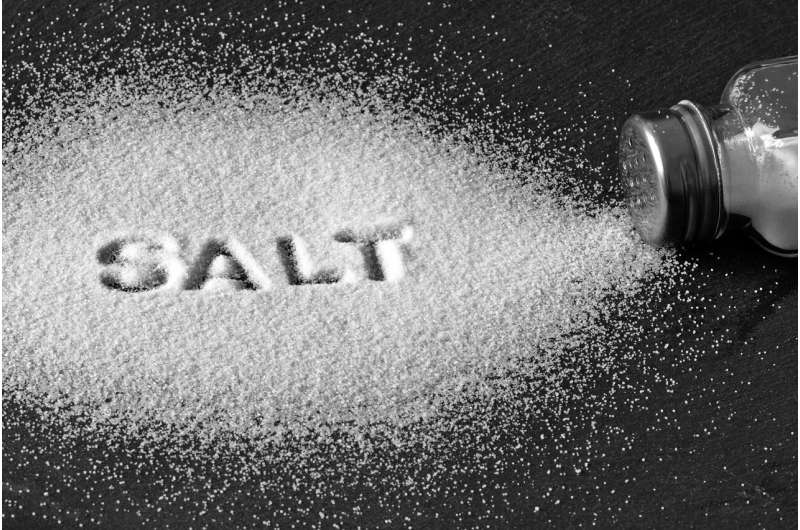This article has been reviewed according to Science X's editorial process and policies. Editors have highlighted the following attributes while ensuring the content's credibility:
fact-checked
reputable news agency
proofread
FDA moves to further reduce salt levels in food

Emboldened by success in its initial efforts to cut dietary salt intake by Americans, the U.S. Food and Drug Administration on Thursday announced Phase II of the endeavor.
U.S. Dietary Guidelines recommend that a person consume no more than 2,300 milligrams (mg) of sodium per day, the equivalent of about one teaspoon of salt.
Excess salt intake is a strong risk factor for high blood pressure, heart disease and stroke.
However, Americans typically take in far higher amounts than recommended, averaging about 3,400 mg/day before 2021, the FDA noted in a news release.
Phase 1 of the FDA's voluntary sodium-reduction targets for the food industry were issued in 2021, and according to the agency "preliminary data from 2022 show about 40% of the initial Phase I targets are very close to or have already been reached, indicating early success of this effort."
That level of success has spurred the agency to begin Phase II.
"If finalized, the new set of voluntary targets would support reducing average individual sodium intake to about 2,750 milligrams per day," the FDA said.
The new initiative is expected to coincide with the U.S. Department of Agriculture's efforts to limit sodium in school meals.
"Reducing sodium in the food supply has the potential to be one of the most important public health initiatives in a generation," Jim Jones, FDA Deputy Commissioner for Human Foods, said in the agency statement. "The early successes we're seeing with sodium level reduction in certain foods is encouraging and indicative of the impact we believe our overall nutrition approach can have on the well-being of society."
The agency notes that 70% of the sodium people ingest each day comes not from salt shakers, but from sodium added to food during manufacturing and as part of commercial food preparation.
"Strong scientific evidence supports lowering sodium intake from current levels," the FDA said. "Reducing sodium intake has the potential to prevent hundreds of thousands of premature deaths and illnesses in the coming years by helping to reduce risk for heart disease and stroke."
According to the American Heart Association (AHA), even the recommended limit of 2,300 mg of sodium per day may be too high for some people.
"The ideal limit is no more than 1,500 per day for most adults, especially for those with high blood pressure," the AHA said. "Cutting out just 1,000 milligrams a day can improve blood pressure and heart health."
Always choose fresh foods rather than processed fare if you can, because highly processed foods are often loaded with added salt.
Some of the most sodium-rich foods include some of America's favorites, however: Burgers, burritos, tacos, deli meats, pizza, chicken dishes, pasta dishes, commercial soups and of course chips and other salty snacks.
However, there are a number of easy ways to cut down on your daily sodium, the AHA suggests:
- Look for "low-sodium" versions of foods
- Read labels, looking for "soda," "sodium" and the symbol "Na," on labels for items like canned soups, ketchup and other condiments, especially
- Ideally, get your fruits and veggies fresh, and if you buy them canned or frozen, make sure they have "low salt" on the packaging
- Go for unsalted nuts, seeds, dried beans, peas and lentils
- Talk to your doctor about commercial salt-substitute products, which often have high levels of potassium instead of sodium
- Ask for low-sodium fare on restaurant menus when dining out
- Most importantly, take the salt shaker off your table, and resist the urge to add salt to foods as you're cooking. Spices and herbs can often provide foods with great flavor, without any risk to health
"It may take some time for your taste buds to adjust to a lower-sodium diet," the AHA said. "But there are delicious options for low-sodium meals."
More information: The Academy of Nutrition and Dietetics has more on low-salt diets.
© 2024 HealthDay. All rights reserved.



















